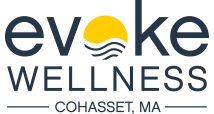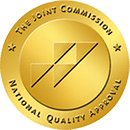The United States is in the midst of an addiction epidemic. We’ve been hearing about opioids and the opioid epidemic that has been occurring for the last 20 years, but it’s not just opioids that are of concern anymore, it’s drugs in general. Addiction has gotten terrible in the United States and drug overdose and overdose fatalities continue to rise each day. There is treatment available, but what about the people that are suffering and not ready to go to treatment? What about the people that are too impaired to determine they need help? And what about those that want help, but are scared? Fear keeps a lot of addicts sick with their disease for years, and sometimes a person ends up losing their life before they are able to get help. This is Casey’s story.
The Story Behind Casey’s Law
A young 23-year-old guy named Matthew Casey Wethington lost his life in 2002 from a heroin overdose. Casey was a very energetic young man who loved and enjoyed his life until drugs were taken. Casey, like countless others, never intended on becoming an addict when he used for the first time. He didn’t realize that that first use would progress to dependence and then to the disease of addiction. His parents tried to get him help, but at the time there was no law that could force someone into treatment if they are an adult. After Casey died, his parents continuously lobbied for change. Finally, on April 9th, 2004 “Casey’s Law” was passed. On July 13th, 2004, this law took effect.
What Is Casey’s Law?
Addiction distorts a person’s thinking. Addicts are often in denial and unable to make rational decisions like the need for treatment. Family and friends feel hopeless and frequently have to sit back and watch their loved ones spiral out of control. Sometimes this even means watching someone they love lose their life to drugs. The Matthew Casey Wethington Act “Casey’s Law” provides a means for intervening with an individual who is unable to recognize that they need treatment due to their addiction. In addition, Casey’s Law allows parents, relatives, and/or friends to petition the court for treatment on behalf of a substance abuse impaired person.
Voluntary and Involuntary Treatment For Addiction
Being a recovering addict myself, I have always thought that forcing someone into treatment isn’t effective. The first time I ever went to treatment, I was “forced” by family and others, and I just wasn’t ready to stop using. Almost as soon as I got out of treatment, I was back out using again.
The Kentucky Office Of Drug Control Policy “Casey’s Law” says:
Studies show that involuntary treatment can be just as successful as voluntary treatment. Most individuals who are substance abuse-impaired receive court-ordered treatment only after they have become arrested for a crime while under the influence of a substance. Drugs and crime often go hand-in-hand because people who are substance abuse impaired are forced by their disease to resort to any means necessary to procure their drug. Court-ordered treatment can be effective regardless of who initiates it. Not all people who are substance abuse impaired are arrested or, in the event that they are, may not receive the necessary treatment. (KentuckyOfficeofDrugControlPolicy)
However, as stated above, studies show that involuntary treatment can be just as effective as voluntary.
What Is The Process To Use Casey’s Law?
In order to have someone involuntarily committed to treatment for addiction, the following steps must be taken.
- Obtain a copy of the petition from the District Court clerk’s office by requesting form HERE
- A friend, relative, spouse, family member, or guardian of the substance abuse impaired individual must complete the petition and file it with the District Court clerk.
- The court will review the allegations in the petition and examine the petitioner under oath.
- The court then determines the probable cause to order treatment for the individual named in the petition (the respondent).
- If probable cause is established, the judge appoints an attorney to represent the respondent, order the respondent to be evaluated, and schedule a hearing within 14 days.
- The respondent is notified of the date and purpose of the hearing.
- The respondent is evaluated by two qualified health professionals, at least one of whom is a physician, to determine if the respondent could benefit from treatment.
- If the judge finds the respondent should undergo treatment, the court shall order treatment from 60 days up to 360 days, depending upon the request in the petition and the evaluation result. Treatment options vary depending on each individual’s circumstances and range from detoxification to intensive treatment through recovery. (ODCP.KY.GOV)
Unfortunately, Casey’s Law is only active in Kentucky and now expanded into Ohio. Casey’s parents are lobbying to get this law active in more states like Georgia. With laws like Casey’s Law, family and friends can be more active and their loved one’s disease and avoid tragic outcomes from drug and alcohol use.
Call Now for Priority Admission to Evoke Wellness at Cohasset Drug Addiction Rehab
Evoke Wellness at Cohasset offers evidence-based addiction treatment to cater to each patient’s individual needs. Our solution-focused treatment provides men, women, and families integrated and comprehensive care geared towards leading you on the road to long-lasting recovery. At Evoke Wellness at Cohasset, our primary goal is to make your treatment experience as comfortable as possible. If you are having issues with any substances, let us help you. Our specialists and professionals are highly qualified and supportive and will help you start today’s recovery journey. Recovery today for a better tomorrow




